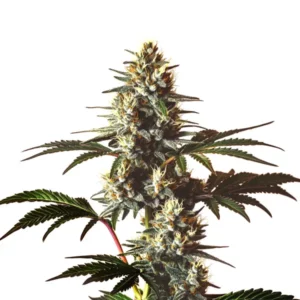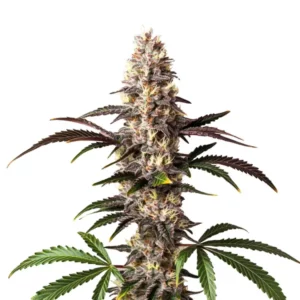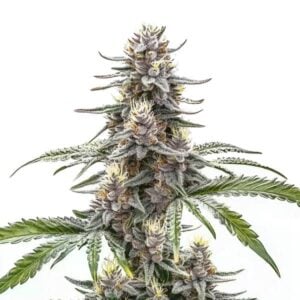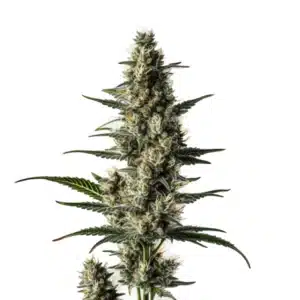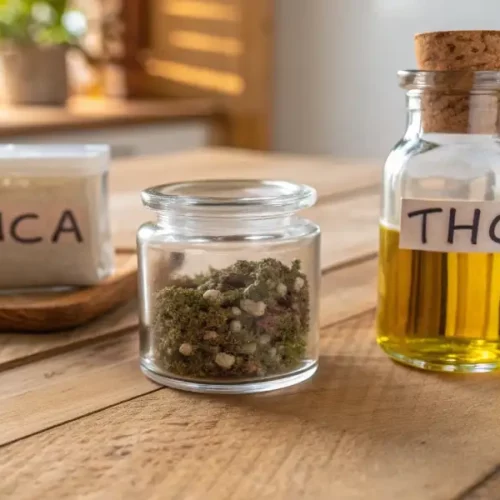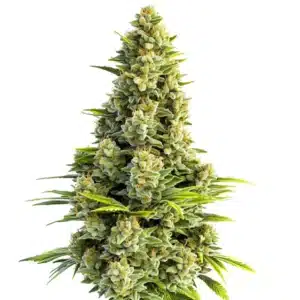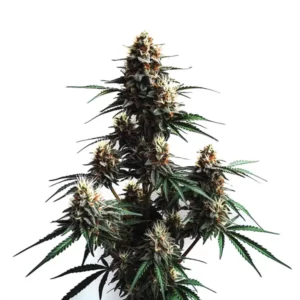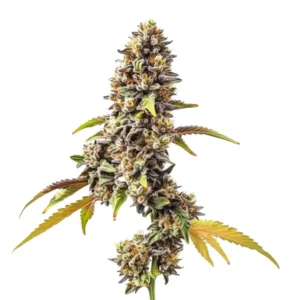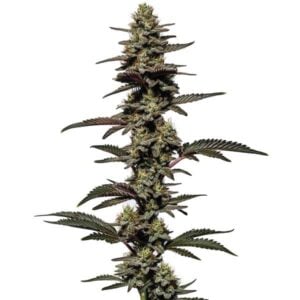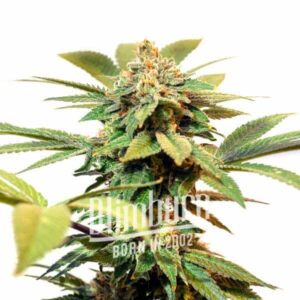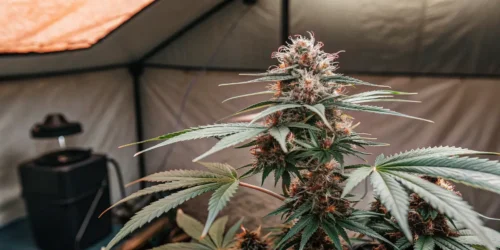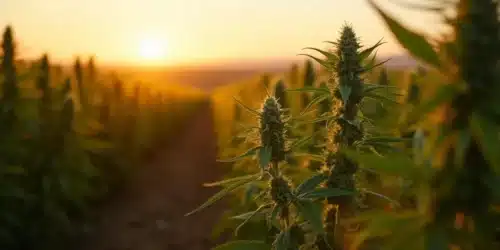Imagine stepping into your garden to find thriving cannabis plants basking in the sunlight, their buds glistening with trichomes and almost ready for harvest. Autoflowering plants make this vision a reality, offering an approachable and efficient way to cultivate cannabis outdoors. With their unique ability to flower based on age rather than light exposure, these plants are a game-changer for growers of all experience levels. In this guide, you’ll learn how to grow autoflowering plants outdoors successfully, ensuring a bountiful harvest season after season.
Autoflowering Cannabis Plants
Autoflowering cannabis plants differ from traditional photoperiod strains in that they automatically transition to the flowering stage after a set period, typically 3–4 weeks. This ability stems from their ruderalis genetics, which evolved in regions with short summers and extreme weather conditions. As a result, autoflowers are naturally resilient and can adapt to a wide range of environments.
One of the most appealing traits of autoflowers is their quick growth cycle. Most strains are ready for harvest in 8–12 weeks from seed, making them ideal for growers looking for rapid results. Additionally, their compact size, often no taller than 3 feet, makes them easy to manage and suitable for small spaces. Combined with their robust genetics, autoflowers are perfect for outdoor cultivation, even in less-than-ideal climates.
Promos & Deals
Benefits of Growing Autoflowering Plants Outdoors
Growing autoflowering plants outdoors offers several advantages, especially when compared to indoor cultivation. Planting autoflower seeds outdoors allows growers to take full advantage of natural sunlight, eliminating the need for artificial lighting and reducing setup costs and energy consumption. Moreover, the sun’s full spectrum of light promotes healthier growth and maximizes resin production.
The short life cycle of autoflowers enables multiple harvests within a single growing season. For example, planting in early spring allows you to harvest by early summer, leaving time for a second or even third crop. This characteristic makes autoflowers particularly appealing in regions with long growing seasons, but their adaptability ensures they perform well in shorter seasons too.
Their natural resilience also simplifies outdoor cultivation. Autoflowers are less susceptible to pests and diseases and can handle fluctuations in temperature and humidity better than many photoperiod strains. This makes them an excellent choice for beginners and experienced growers alike.
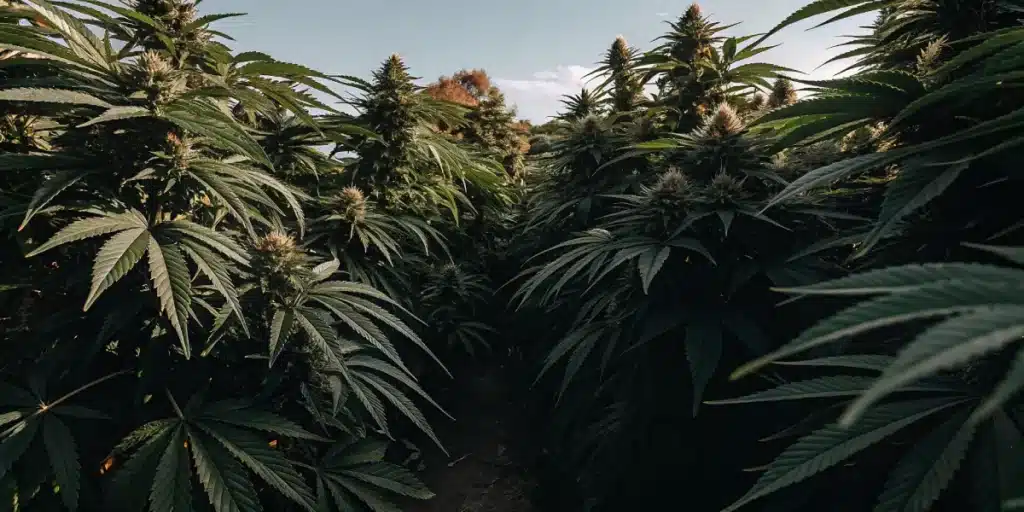
Choosing the Right Strain for Outdoor Growing
Selecting the right autoflowering strain is crucial to the success of your outdoor grow. Strains bred for outdoor cultivation tend to be more robust, with improved resistance to environmental stressors like pests, mold, and harsh weather conditions. Research is essential to find a strain that matches your local climate and personal preferences.
For colder climates, consider strains known for their resilience to frost and cooler temperatures, such as Northern Lights Auto. If you live in a warm region, strains like Amnesia Haze Auto thrive in hot, sunny conditions. Additionally, look for strains with specific traits you value, such as high THC levels, distinctive flavors, or specific effects, to ensure the harvest meets your expectations.
Preparing Your Outdoor Growing Space
The foundation of a successful outdoor grow lies in the preparation of the growing space. A carefully chosen location can make a significant difference in your plants’ health and productivity. Ideally, select a spot that receives at least 8 hours of direct sunlight each day. This ensures your plants get the energy they need to grow and produce dense, resinous buds.
Good soil is equally important. Autoflowers prefer a light and airy growing medium that allows roots to breathe and drains well. A mix of peat moss, compost, and perlite creates an ideal soil structure, while adding organic matter like worm castings enriches the soil with essential nutrients. Before planting, test the soil’s pH and adjust it to fall within the optimal range of 6.0–6.5. Proper preparation at this stage prevents nutrient deficiencies and sets your plants up for success.
Planting Autoflowering Seeds Outdoors
Autoflowering seeds can be started using the paper towel method or planted directly into the soil. Germinating seeds in a controlled environment, such as between damp paper towels, allows you to monitor their progress and ensure strong, viable sprouts. Once the seeds have germinated, plant them directly into their final containers or garden beds to minimize transplant stress.
When planting outdoors, ensure seedlings are protected from harsh weather conditions. If the temperature drops significantly at night, consider using cloches or temporary covers to maintain warmth. Similarly, if the sun is intense, providing some shade during the hottest part of the day can prevent heat stress.
Caring for Autoflowering Plants Outdoors
Autoflowering plants require consistent but straightforward care. Watering is one of the most important aspects. Ensure the soil is kept moist but not waterlogged, allowing the top inch to dry out between waterings. During hot weather, you may need to water more frequently, but always check soil moisture levels to avoid overwatering.
Feeding your plants the right nutrients at the right time is also essential. During the vegetative stage, autoflowers benefit from a nitrogen-rich fertilizer to promote leafy growth. As they transition to flowering, switch to a nutrient mix with higher levels of phosphorus and potassium to support bud development. Keep an eye on your plants for signs of nutrient deficiencies, such as yellowing leaves or slowed growth, and adjust their feeding schedule as needed.
Pests and diseases are a common concern for outdoor growers. Regular inspections can help you catch problems early. Companion planting, such as growing marigolds or basil nearby, can naturally deter pests. If issues arise, organic solutions like neem oil or insecticidal soap are effective and safe for cannabis plants.
Maximizing Yields Outdoors
To get the most out of your autoflowers, consider training techniques that enhance light exposure to all parts of the plant. Low-Stress Training (LST) is a gentle method where stems are bent and tied down to create an even canopy. This increases light penetration to bud sites, leading to larger, more uniform buds. Unlike topping or pruning, which can stress autoflowers due to their short vegetative phase, LST encourages growth without hindering the plant’s development. For those growing autoflowering outdoor, LST can be especially useful in maximizing yields while keeping plants discreet and manageable.
Timing your planting is another critical factor in maximizing yields. In regions with long growing seasons, staggering your plantings can result in continuous harvests. For example, starting seeds in early spring allows you to harvest by June and plant a second round for a fall harvest. Always consider the weather forecast to avoid planting during periods of extreme heat or potential frost.
Harvesting Autoflowering Plants Outdoors
Signs of Ripeness
Monitor your plants for these indicators:
- Trichomes appear milky white with some turning amber.
- Pistils darken and curl inward.
- Buds feel dense and sticky to the touch.
Harvesting Process
- Dry buds for 7–10 days, then cure them in airtight jars for 2–4 weeks to enhance flavor and potency.
- Cut plants during early morning for optimal terpene preservation.
- Trim large fan leaves and hang branches upside down in a dark, well-ventilated area.
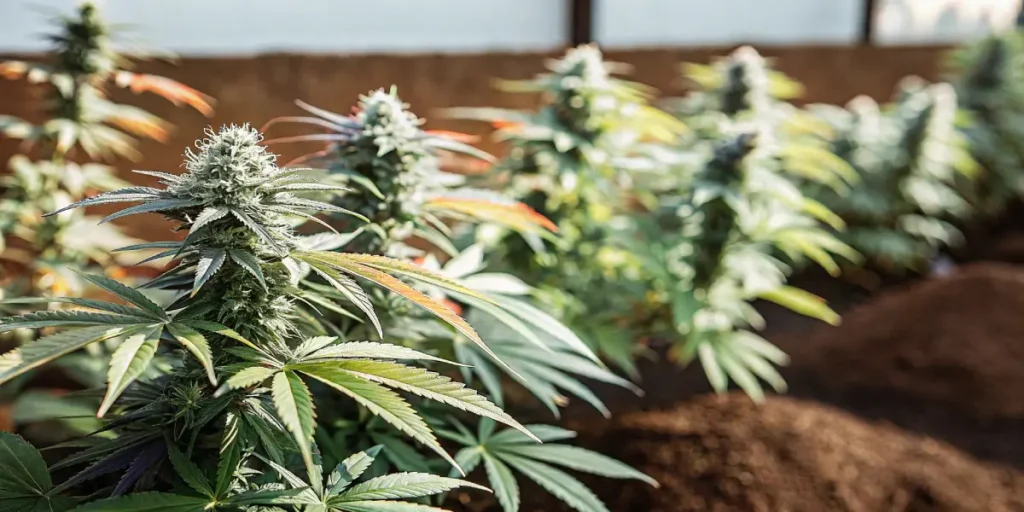
FAQs About Growing Autoflowering Plants Outdoors
How much sunlight do autoflowering plants need outdoors?
Autoflowering plants thrive with 8–10 hours of direct sunlight daily. While they can adapt to less light, maximizing sun exposure ensures healthier growth and larger yields. Choose a location with full sun to give your plants the best start.
Can autoflowering plants grow in cold climates?
Yes, autoflowers are well-suited to colder climates due to their ruderalis genetics. Choose strains bred for resilience, such as Northern Lights Auto, and consider planting during the warmer months. In colder conditions, using a greenhouse or cloches can protect plants from frost and temperature fluctuations.
Do autoflowering plants require fertilizers?
Yes, but autoflowers need less fertilizer than photoperiod strains. Use a nitrogen-rich fertilizer during the vegetative phase and switch to a bloom formula with higher phosphorus and potassium during flowering. Always start with half-strength nutrients to avoid overfeeding.
How do I prevent pests when growing autoflowers outdoors?
Prevent pests by maintaining a clean growing area, inspecting plants regularly, and using natural deterrents like neem oil or companion plants such as marigolds. Beneficial insects like ladybugs can also help control common pests like aphids.
What is the best time to plant autoflowering seeds outdoors?
The best time to plant depends on your local climate. In most regions, planting in early spring ensures a harvest by early summer, leaving time for additional crops. Avoid planting during extreme heat or late in the season when frost risks are high.

